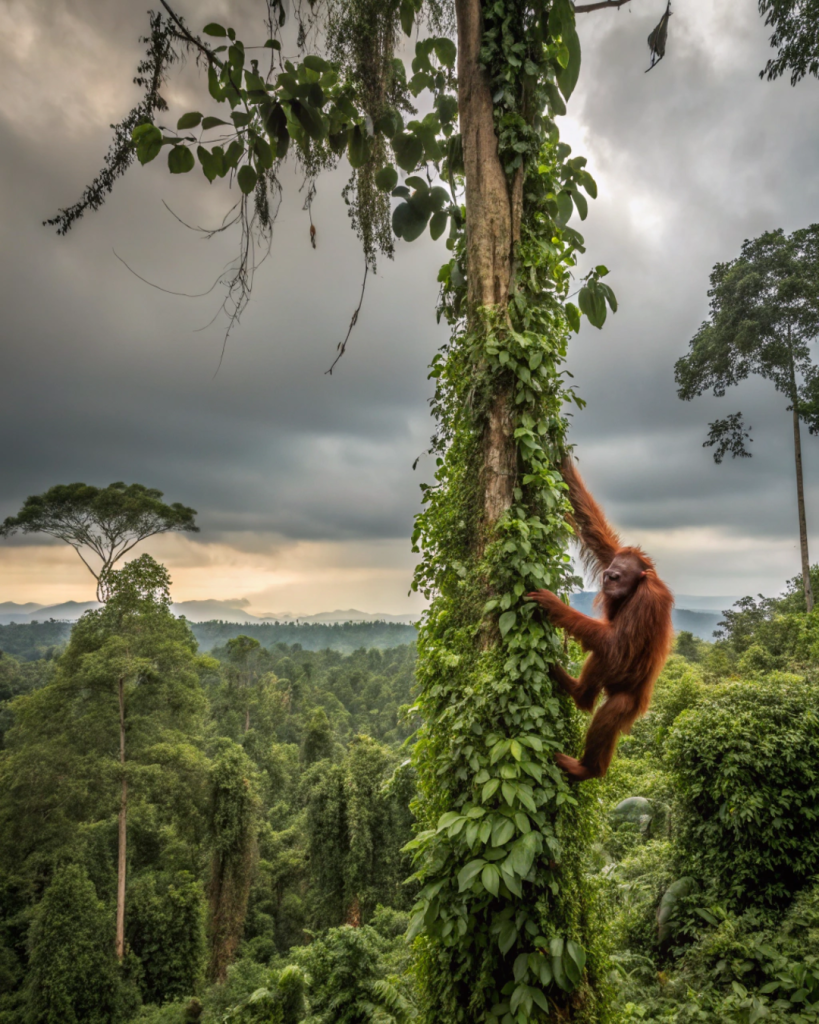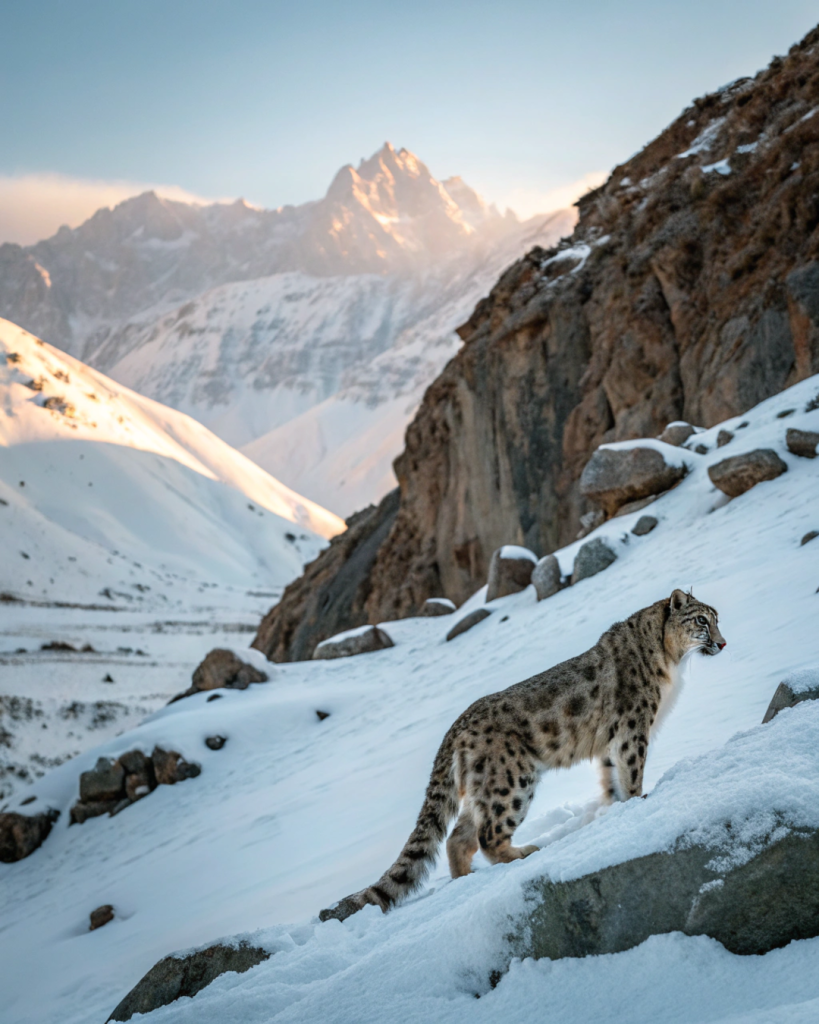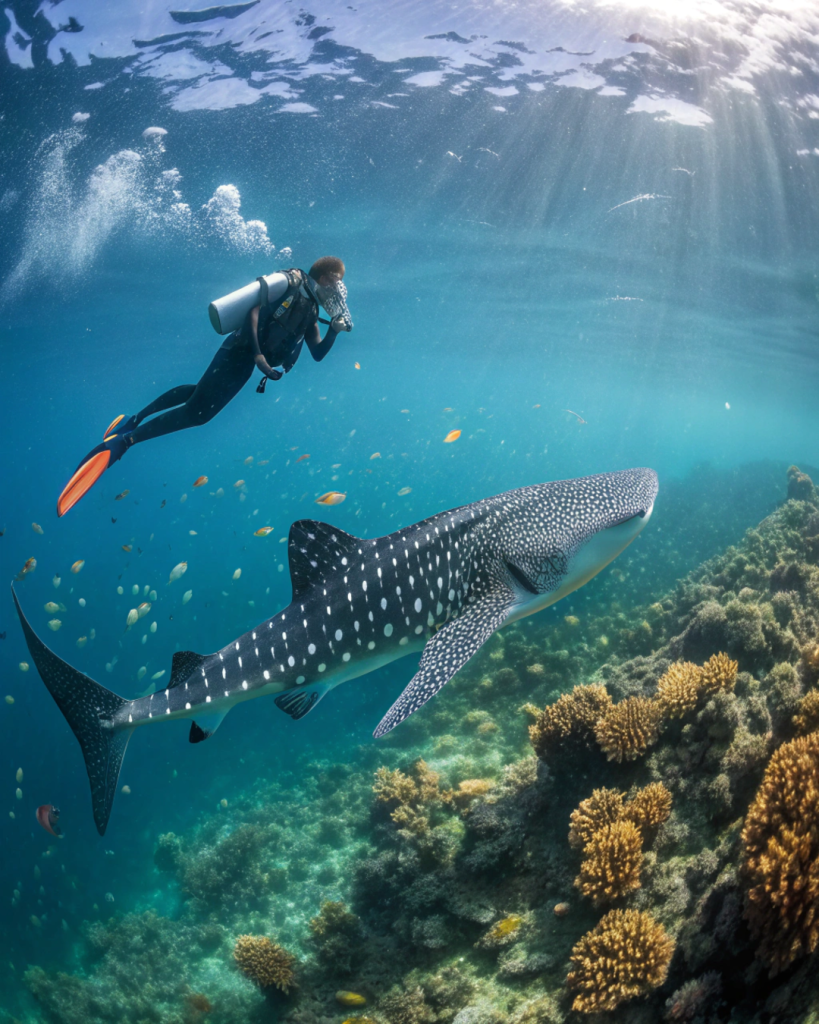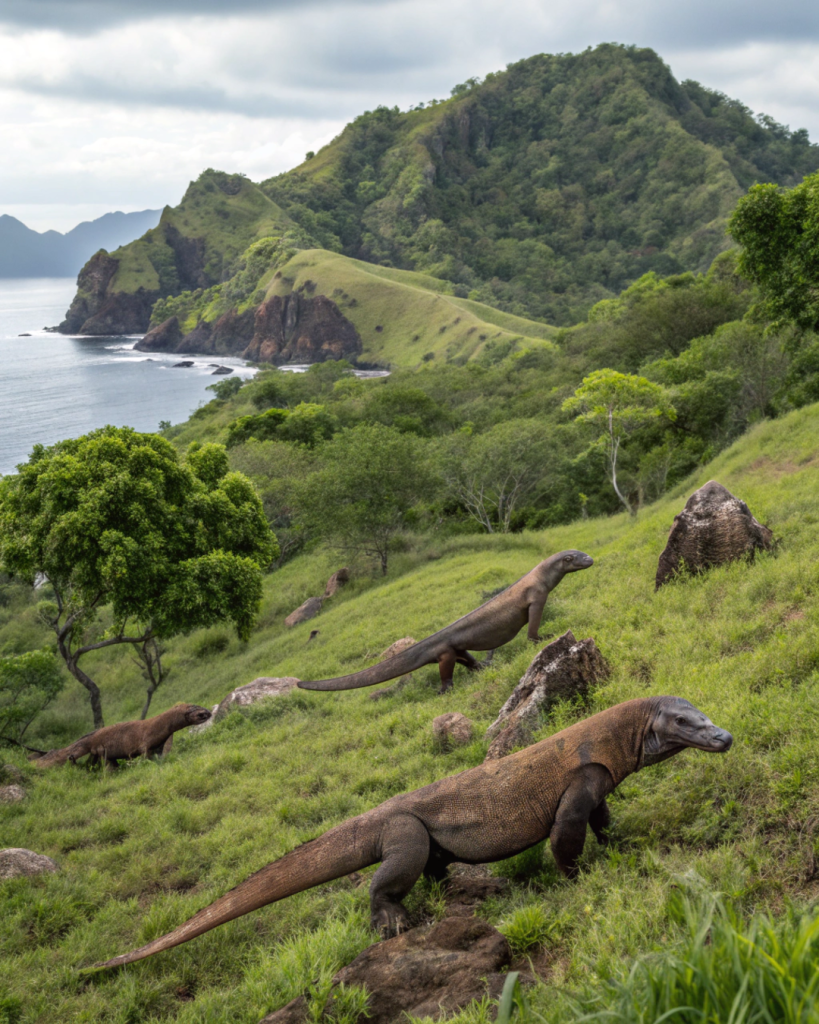As the morning mist slowly lifted over the dense Bornean rainforest, I found myself holding my breath. Just twenty feet away, a wild orangutan mother and her baby were gracefully navigating the canopy, seemingly unbothered by our presence.
Their amber fur glowed in the dappled sunlight filtering through the leaves. It was that moment—one of many unforgettable wildlife encounters I’ve had across Asia—that reminded me why this continent offers some of the most extraordinary animal experiences on the planet.
From the snow-capped Himalayas to the tropical jungles of Southeast Asia, the continent harbors an astonishing diversity of creatures, many of which can be observed in their natural habitats with the right planning and respect for these magnificent beings.
Orangutan Trekking in Borneo

The island of Borneo, shared by Malaysia, Indonesia, and Brunei, is home to one of our closest relatives in the animal kingdom—the endangered Bornean orangutan. With their soulful eyes and remarkable intelligence, encountering these great apes in the wild is a profoundly moving experience.
When and Where to Go
The Malaysian state of Sabah offers some of the best opportunities for orangutan sightings. The Sepilok Orangutan Rehabilitation Centre near Sandakan is an excellent starting point, but for a more authentic wilderness experience, I recommend a multi-day trek into Danum Valley Conservation Area or along the Kinabatangan River.
In my experience, the best time to visit is during the drier months (March to October), though be prepared for short afternoon downpours regardless of when you travel—this is the rainforest, after all.
Essential Information
- Getting There: Fly into Kota Kinabalu and take a domestic flight to Sandakan, which is the gateway to most orangutan experiences.
- Costs: Budget around $150-200 per day for guided treks, including food and accommodation. Park entry fees are approximately $20 per person.
- Where to Stay: For authentic experiences, choose simple forest lodges or homestays ($50-100 per night). The Borneo Rainforest Lodge in Danum Valley offers more comfort for $300+ per night.
- Local Tip: Book your wildlife tours with conservation-focused operators that employ local guides. Their knowledge of the forest and wildlife behavior is invaluable.
Snow Leopard Tracking in Ladakh, India

Perhaps the most elusive of Asia’s great predators, the snow leopard represents the holy grail for many wildlife enthusiasts. Venturing into the remote, high-altitude landscapes of Ladakh in search of these ghost-like cats is as much about the journey as the potential sighting.
The Quest for the Ghost Cat
The Hemis National Park in Ladakh is renowned as one of the world’s best locations for spotting snow leopards. These magnificent predators descend to lower elevations during winter (January to March), following their prey—primarily blue sheep and Himalayan ibex.
Tracking snow leopards requires patience, specialized knowledge, and physical endurance. You’ll trek through breathtaking mountain scenery at altitudes above 4,000 meters, staying in remote villages or camps, and spending days scanning rocky slopes through spotting scopes.
Essential Information
- Getting There: Fly to Leh, Ladakh’s capital, and acclimatize for 2-3 days before beginning your expedition.
- Costs: Specialized snow leopard expeditions run $2,500-4,000 for 10-14 days, including guides, accommodation, and meals.
- Where to Stay: During the trek, you’ll stay in homestays in remote villages like Rumbak or in heated camping tents. In Leh, numerous guesthouses offer comfort for $30-60 per night.
- Local Tip: Work with Ladakhi guides who know the mountains intimately and support community-based tourism initiatives that benefit local conservation efforts.
Swimming with Whale Sharks in the Philippines

The gentle giants of the ocean, whale sharks offer one of Asia’s most awe-inspiring underwater encounters. The crystalline waters off Oslob on Cebu Island and Donsol in the Sorsogon Province have become renowned for almost guaranteed sightings of these massive, spotted filter-feeders.
Responsible Encounters
While Oslob offers year-round sightings due to controversial feeding practices, I strongly recommend visiting Donsol (February to May), where encounters happen naturally without baiting. There’s nothing quite like slipping into the water and finding yourself alongside a 30-foot whale shark as it peacefully glides by, filtering plankton with its enormous mouth.
Essential Information
- Getting There: For Donsol, fly to Legazpi City and take a one-hour drive. For Oslob, fly to Cebu City and travel 3-4 hours south.
- Costs: Whale shark interaction fees in Donsol are around $25 for foreigners, including boat hire and guide fees.
- Where to Stay: Donsol offers a range of accommodations from basic guesthouses ($25) to more comfortable resorts ($80-120).
- Food Recommendation: Try kinilaw—a Filipino ceviche made with the freshest seafood caught that morning—at local eateries along the coast.
Komodo Dragons on Indonesia’s Dragon Islands

Witnessing the world’s largest lizards in their only natural habitat is an experience straight out of prehistory. Reaching up to 3 meters long and weighing over 70 kg, Komodo dragons roam freely across several islands in Indonesia’s Komodo National Park.
Walking with Dragons
The islands of Komodo and Rinca offer the best opportunities to see these remarkable reptiles. Guided walks take you through savanna-like landscapes where dragons bask in the sun, hunt deer, or gather around water holes.
I’ll never forget rounding a bend on a trail to find a massive male Komodo striding purposefully across our path, his forked tongue flicking to sample the air. The ancient, primordial feeling of that moment stays with me still.
Essential Information
- Getting There: Fly to Labuan Bajo on Flores Island, then take a boat to the national park.
- Costs: Park entrance fees are around $15 per person per day, plus $5-10 for a guide, which is mandatory.
- When to Visit: The dry season (April to December) offers the best conditions, with dragons most active in the mornings.
- Where to Stay: Labuan Bajo has options ranging from backpacker hostels ($15) to luxury resorts ($200+). Most visitors take day trips or live-aboard boats to the islands.
- Local Tip: Combine your dragon visit with spectacular snorkeling or diving in the park’s coral reefs—some of the most pristine in Indonesia.
Ethical Elephant Experiences in Thailand
The relationship between humans and elephants in Southeast Asia is complex and often troubled. Fortunately, a new generation of sanctuaries is focusing on elephant welfare and conservation rather than exploitation.
Sanctuary, Not Circus
The Elephant Nature Park near Chiang Mai has pioneered ethical elephant tourism, rescuing animals from logging and riding camps. Here, you can observe elephants socializing naturally, help prepare their food, and even assist with bathing them in the river—all without riding or other harmful interactions.
Essential Information
- Getting There: Most sanctuaries offer transport from Chiang Mai, which is easily accessible by flight or overnight train from Bangkok.
- Costs: A full-day visit costs $70-80, while volunteer stays start at $400 for a week, including accommodation and meals.
- Where to Stay: Many sanctuaries offer on-site accommodation. In Chiang Mai, guesthouses range from $15-40, with boutique hotels starting at $60.
- Food Recommendation: While in Northern Thailand, don’t miss khao soi—a curry noodle soup that’s the region’s signature dish.
If you’re planning multiple adventures across Asia, I’ve compiled all my travel knowledge into a comprehensive resource. My ebook, “Asia Travel Mastery: Your Ultimate Guide to Exploring 14 Iconic Destinations,” provides detailed budgeting information, cultural insights, and a complete travel checklist to help you navigate these experiences seamlessly. The audiobook version is perfect for planning during your long-haul flights to the continent. You can find it on Gumroad for just $19.99—an investment that will save you countless hours of research and potentially hundreds in travel costs.
Tiger Safaris in India’s National Parks
Few wildlife experiences match the electric thrill of spotting a wild Bengal tiger moving through the forests of central India. With protection efforts showing positive results in several reserves, your chances of encountering this iconic big cat are better than ever.
The Jungle Book Come to Life
Bandhavgarh, Kanha, and Ranthambore National Parks offer among the highest density of tigers and therefore the best opportunities for sightings. Game drives take place in the early morning and late afternoon when tigers are most active.
The moment when your jeep rounds a bend and you lock eyes with a tiger padding silently along a forest track is simply unforgettable—a perfect blend of exhilaration and humbling respect.
Essential Information
- Getting There: Each park has nearby domestic airports or train stations. Ranthambore is accessible from Jaipur, while Bandhavgarh and Kanha require more complex connections.
- Costs: Safari jeep fees range from $20-50 per person, with premium zones costing more. Park entry fees are additional.
- When to Visit: The hot, dry months of April to June offer the best sightings as tigers congregate around limited water sources. The parks close during monsoon season (July-September).
- Where to Stay: Options range from basic lodges ($40-60) to luxury wilderness resorts ($200-400).
- Local Tip: Book safaris well in advance, especially for weekend visits and peak season. Morning drives typically yield better sightings than afternoon ones.
Japanese Snow Monkeys in Hot Springs
The image of Japanese macaques soaking in steaming hot springs against a backdrop of snow has become iconic. At Jigokudani Snow Monkey Park in the Japanese Alps, you can observe this unique behavior up close.
Monkeys in an Onsen
During winter months, troops of wild macaques descend from the surrounding mountains to bathe in the naturally heated waters, creating one of wildlife photography’s most sought-after scenes. The park maintains a hands-off approach, allowing the monkeys to behave naturally.
Essential Information
- Getting There: From Tokyo, take the Shinkansen to Nagano, then local transport to the park. The final approach is a 30-minute forest walk.
- Costs: Park entry is approximately ¥800 ($7).
- When to Visit: December to March offers the best chance of seeing monkeys in the baths, with January and February providing the most picturesque snowy scenes.
- Where to Stay: The nearby town of Shibu Onsen offers traditional ryokan inns where you can enjoy hot spring baths yourself (¥15,000-25,000 or $130-220 per person, including dinner and breakfast).
- Food Recommendation: Try oyaki—steamed buns with various fillings—a specialty of Nagano Prefecture.
Birdwatching in Bhutan’s Pristine Forests
The tiny Himalayan kingdom of Bhutan has preserved over 70% of its land as forest cover, creating a haven for more than 700 bird species, including many found nowhere else on earth.
A Haven for Feathered Treasures
The magic of birdwatching in Bhutan lies not just in the spectacular species—like the colorful satyr tragopan or the majestic black-necked crane—but in the pristine habitat and Buddhist ethos of non-harm that has protected these creatures for centuries.
Phobjikha Valley, the winter home of the endangered black-necked crane, is particularly special. Local traditions honor these birds, with festivals celebrating their annual arrival from Tibet.
Essential Information
- Getting There: All visitors to Bhutan must book through authorized tour operators and pay a daily tariff (currently $200-250) that covers accommodation, transportation, and guide services.
- When to Visit: Spring (March-May) offers the best overall birdwatching, while November brings the black-necked cranes to Phobjikha.
- Where to Stay: The daily tariff includes standard accommodations; upgrades to luxury resorts like Amankora or Six Senses are available for an additional premium.
- Local Tip: Learn a few words of Dzongkha (the local language) and about Bhutanese customs before visiting. This small effort is greatly appreciated by locals and enriches your experience.
Marine Encounters in the Maldives
While the Maldives is renowned for its overwater bungalows and honeymoon appeal, its true treasure lies beneath the surface. The archipelago’s 26 atolls encompass some of the world’s most diverse marine ecosystems.
Underwater Wonders
Manta rays, reef sharks, sea turtles, and an incredible diversity of tropical fish can all be observed during even a casual snorkeling session from your resort. For more dedicated marine enthusiasts, the Maldives offers specialized expeditions focused on manta rays, whale sharks, or dolphin encounters.
Essential Information
- Getting There: Fly to Male International Airport and transfer to your island by speedboat or seaplane.
- Costs: The Maldives spans all budget levels, from guesthouses on local islands ($50-100) to ultra-luxury private island resorts ($500-2,000+ per night).
- When to Visit: The dry season (November-April) offers the best visibility for underwater experiences.
- Local Tip: Consider visiting local islands like Maafushi or Dhigurah alongside resort stays to experience Maldivian culture and access wildlife experiences at lower costs.
Giant Panda Conservation in China
No wildlife list for Asia would be complete without mentioning China’s national treasure—the giant panda. While most encounters are in breeding centers rather than truly wild settings, conservation efforts have made significant progress in recent decades.
Beyond the Tourist Experience
The Chengdu Research Base of Giant Panda Breeding is the most accessible facility, but for a more immersive experience, I recommend the Dujiangyan Panda Base where volunteer programs allow you to assist keepers with food preparation and enclosure cleaning.
For the ultimate experience (though extremely rare), the Wolong National Nature Reserve occasionally permits small numbers of visitors to track wild pandas with researchers—though sightings are never guaranteed.
Essential Information
- Getting There: Fly to Chengdu, Sichuan Province. Most panda facilities are within 1-2 hours of the city.
- Costs: Entry to the Chengdu base is approximately ¥58 ($8), while volunteer programs start at ¥700 ($100) for a day.
- When to Visit: Visit early morning (before 10 am) when pandas are most active, regardless of season.
- Where to Stay: Chengdu offers accommodations from budget hostels ($15) to international luxury hotels ($150+).
- Food Recommendation: Sichuan cuisine is famous worldwide—try authentic mapo tofu or kung pao chicken at local restaurants. The spice level is adjustable upon request.
Planning Your Asian Wildlife Adventure
Whether you’re drawn to the mysterious snow leopards of the Himalayas or the colorful coral reefs of the Maldives, Asia offers wildlife experiences to suit every interest and budget. The key to meaningful encounters lies in choosing responsible operators, respecting animal welfare, and approaching each experience with patience and appreciation.
For travelers planning to explore multiple destinations across Asia, proper preparation is essential. My comprehensive ebook “Asia Travel Mastery” covers everything from visa requirements to cultural etiquette across 14 iconic destinations, including detailed sections on wildlife experiences. The audiobook version is particularly useful for long-haul flights, allowing you to plan while en route. Find it on Gumroad to transform your Asian adventure from overwhelming to extraordinary.
Nearby Extensions
If you’re visiting these wildlife hotspots, consider these nearby destinations to complement your journey:
- From Borneo’s orangutan habitats, extend to Bako National Park for proboscis monkeys or dive at Sipadan Island.
- After tracking snow leopards in Ladakh, explore the ancient monasteries of Leh or trek in the Markha Valley.
- From the Maldives, add on Sri Lanka for elephants, leopards, and sloth bears at Yala National Park.
- Following a tiger safari in central India, visit the erotic temples of Khajuraho or the spiritual city of Varanasi.
In all these encounters, remember that we are privileged guests in these animals’ homes. Travel respectfully, tread lightly, and carry away nothing but photographs and memories of these remarkable beings with whom we share our planet.

